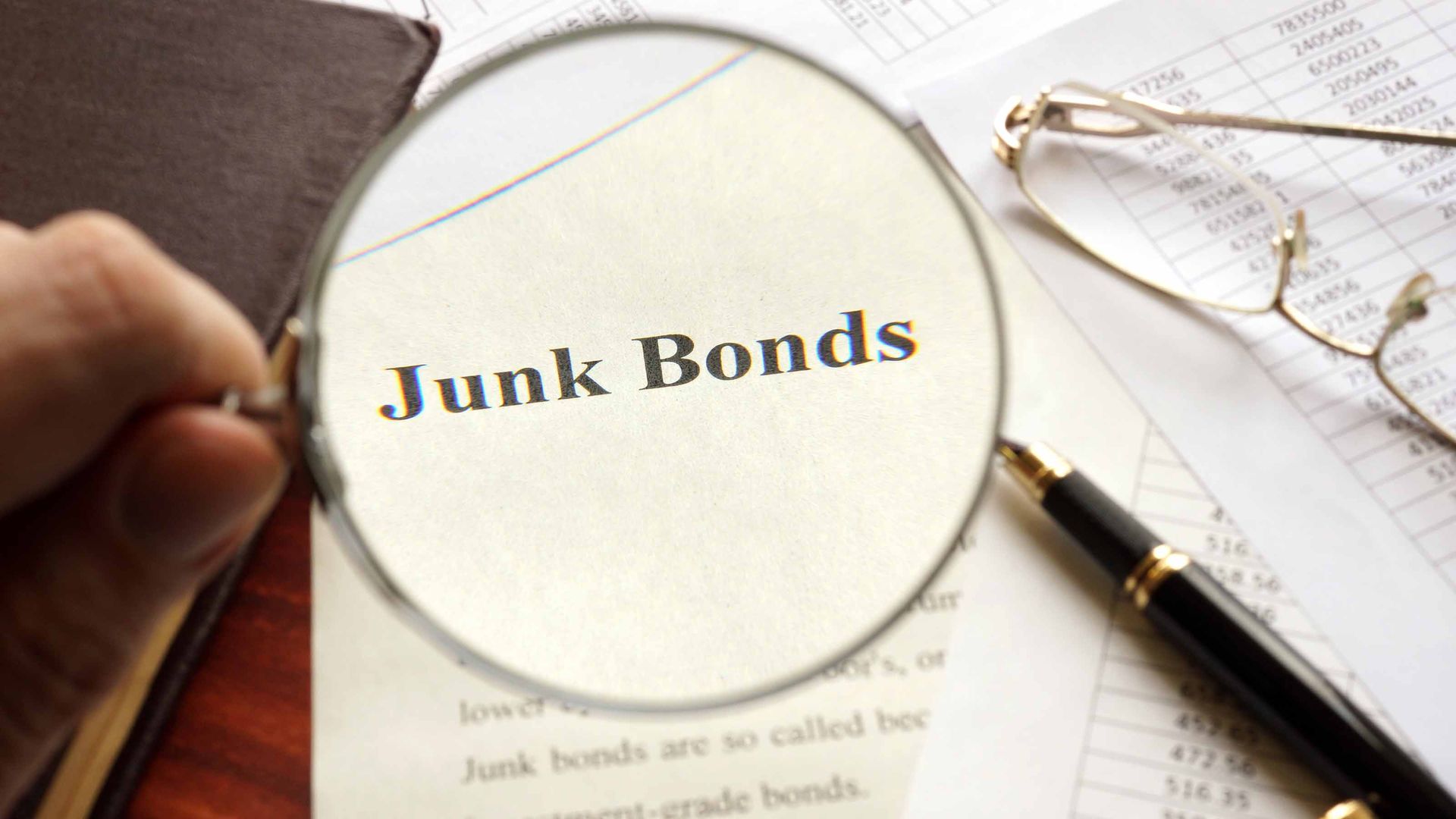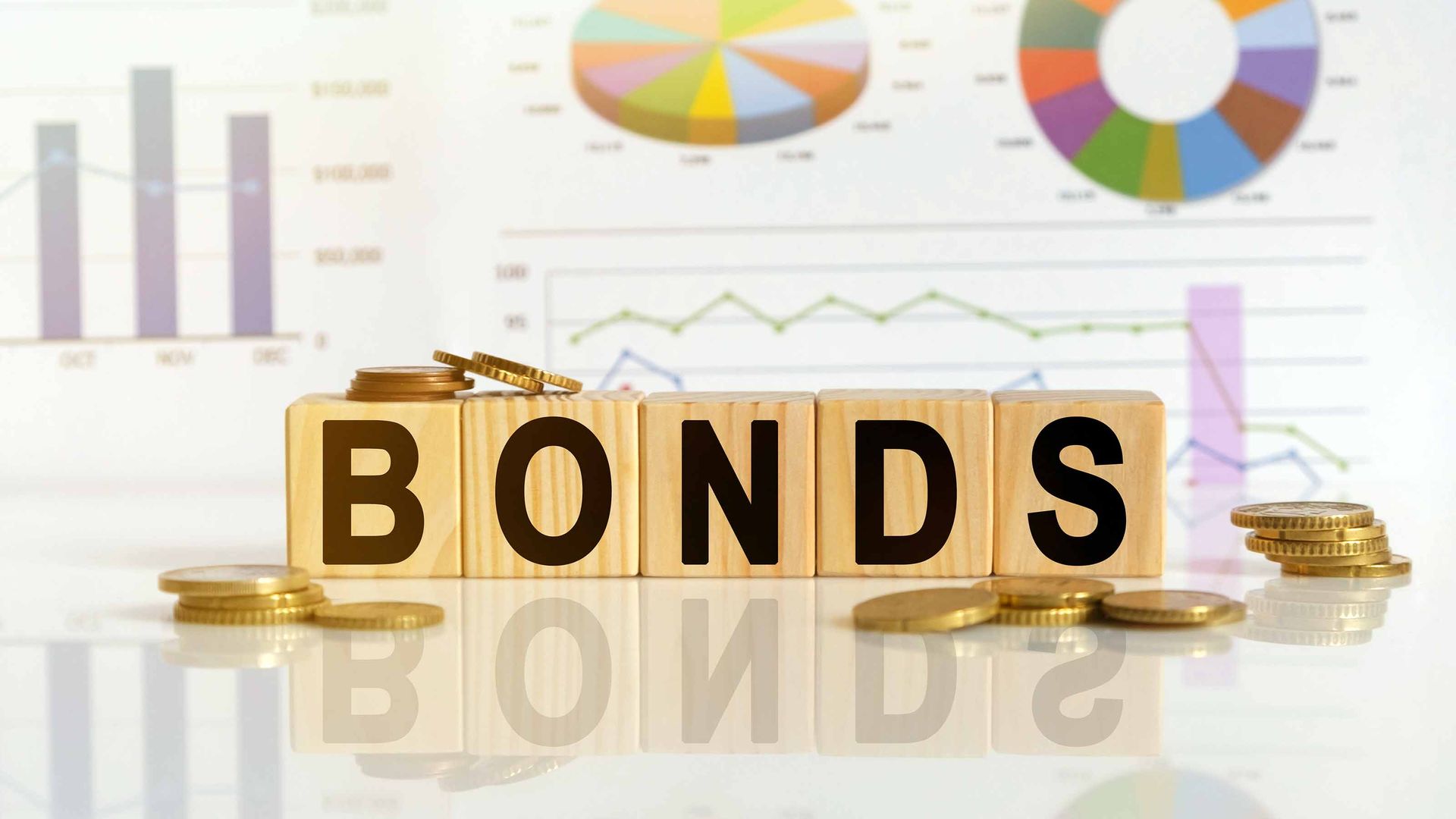Best Bond ETFs to Buy Now
The bond market struggled in 2022, but investors with a longer-term view should consider these bond ETFs to balance their portfolios.
- (opens in new tab)
- (opens in new tab)
- (opens in new tab)
- Newsletter sign up Newsletter


The best bond ETFs are back in fashion after a rough few years.
When Wall Street was booming and key interest rates at the Federal Reserve were near zero, many investors were happily allocating 100% of their portfolio to stocks. And then, in 2022, extreme volatility sparked substantial (and in some cases, record-setting) losses across the bond market.
But bond funds remain a key part to any portfolio. "We still think high-quality bonds play a pivotal role in portfolios as they have shown to be the best diversifier to equity risk," says Lawrence Gillum, fixed-income strategist at independent broker-dealer LPL Financial. "And it's best to have that portfolio protection in place before it's needed."
Bonds are debt securities, where you are investing in a promise by a borrower to pay back the principal value of that loan plus interest. Bonds are issued by local municipalities, the U.S. Treasury, foreign governments, corporations looking for capital, and other similar entities. As benchmark interest rates rise, the borrowing costs for all these institutions also goes up – as do the rates of return on their bonds. And bond ETFs are exchange-traded funds that invest in these fixed-income securities.
To be clear, most investors should never give up on stocks. Over the long term, equity investments are an effective path to growing your money and every diversified portfolio should look across different asset classes. But it has become increasingly apparent over the years that bonds are a very important asset to hold – and one that many investors may be lacking exposure in their holdings.
If you're looking to diversify or reallocate your portfolio mix, these are the best bond ETFs to buy now.
Data is as of Feb. 24. SEC yields reflect the interest earned after deducting fund expenses for the most recent 30-day period and are a standard measure for bond and preferred-stock funds.

Vanguard Total Bond Market ETF
- Fund category: Intermediate core bond
- Assets under management: $87.3 billion
- SEC yield: 4.2%
- Expenses: 0.03%, or $3 annually for every $10,000 invested
The Vanguard Total Bond Market ETF (BND (opens in new tab), $71.93) is a massive fund that ranks as the largest dedicated bond ETF, as well as one of the 15 largest U.S.-listed ETFs of any flavor. It allows investors a simple and effective way to get exposure to the bond market.
BND offers broad exposure to the investment-grade U.S. bonds of all flavors, with more than 10,000 individual securities in the portfolio. The average duration of the bonds is about 6.5 years right now, making it an "intermediate" bond fund that is neither too short term in its focus, nor too long term.
About 67% of BND's portfolio right now is allocated to U.S. government bonds such as Treasury notes or "agency" mortgage debts backed by federally backed financers like Fannie Mae and Freddie Mac. There's also corporate debt in there that makes up about 26% of the portfolio, but it's limited to the most credit-worthy borrowers to reduce the risk profile of one of Wall Street's best bond ETFs.
Learn more about BND at the Vanguard provider site. (opens in new tab)

iShares iBoxx Investment Grade Corporate Bond ETF
- Fund category: Corporate bond
- Assets under management: $32.9 billion
- SEC yield: 5.2%
- Expenses: 0.14%
U.S. government debt is about as rock-solid an investment as you'll come by, since the failure of the U.S. Treasury Department means we all have much bigger things to worry about then our quarterly brokerage statements. However, it also offers more modest yields as a result of this lower risk profile – meaning some investors prefer to focus on corporate debt instead.
With more than 2,500 high-quality bonds, the iShares iBoxx Investment Grade Corporate Bond ETF (LQD (opens in new tab), $105.85) is one of the primary ways to do that – without taking on risky loans to fly-by-night companies. The bonds in this portfolio include top names on Wall Street like Anheuser-Busch InBev (BUD (opens in new tab)), CVS Health (CVS (opens in new tab)) and Goldman Sachs (GS (opens in new tab)) to name a few.
Just keep in mind that the bias of this ETF, as with many corporate bond funds, is toward banking and finance firms that are raising capital to fund their operations. About 25% of the portfolio in this sector, followed by 16% in consumer staples stocks and another 12% in telecom. But when you compare these against other riskier sectors like tech, it's clear that the focus of LQD is on established and stable firms with a high likelihood of repaying their debts.
Learn more about LQD at the iShares provider site. (opens in new tab)

iShares iBoxx $ High Yield Corporate Bond ETF
- Fund category: High-yield bond
- Assets under management: $13.1 billion
- SEC yield: 7.9%
- Expenses: 0.48%
Of course, if you really don't mind the added risk of corporate bonds in pursuit of higher yields, then you may want to look at so-called "junk" bonds. These are obviously loans to companies that aren't as consistent or stable as their peers that are given investment-grade ranking by credit agencies.
The iShares iBoxx $ High Yield Corporate Bond ETF (HYG (opens in new tab), $74.17) is one of the best bond ETFs for junk bond investors, with a big market cap and strong liquidity. It also offers a generous yield that is more than four times the S&P 500 Index.
You'll be buying a portfolio of some 1,200 bonds via HYG, so it's not like one single default will sink you. But keep in mind that every one of these loans carries elevated risk, as they are extended to firms like casino operator Caesars Entertainment (CZR (opens in new tab)) or satellite TV provider DISH Network (DISH (opens in new tab)) instead of your tried-and-true blue chip stocks.
Still, HYG is an attractive investment if you are willing to be more aggressive in your hunt for fixed income.
Learn more about HYG at the iShares provider site. (opens in new tab)

Vanguard Short-Term Corporate Bond ETF
- Fund category: Short-term bond
- Assets under management: $40.5 billion
- SEC yield: 5.0%
- Expenses: 0.04%
Another way to slice up the corporate bond market is to focus on "duration" to adjust your risk profile. This term refers to how long the loans have to come due. Generally speaking, longer duration bonds carry significantly higher risk because it's hard to predict what will happen over the next 10 or 20 years, while short-term loans of just a few years tend to be less risky. The Vanguard Short-Term Corporate Bond ETF (VCSH (opens in new tab), $75.18) is focused on that latter strategy.
With uncertainty around interest rates and geopolitical risk thanks to the war in Ukraine, some investors simply don't know what's going to happen next – and, as a result, prefer to focus on the near term.
VCSH is one of the best bond ETFs for this strategy, given its average duration of just 2.7 years across a portfolio of nearly 2,400 bonds. Furthermore, these are investment-grade loans to firms like aerospace giant Boeing (BA (opens in new tab)) and financial giant Bank of America (BAC (opens in new tab)). With no "junk" in the holdings and a very short time horizon, investors can have confidence in the stability of these assets.
Learn more about VCSH at the Vanguard provider site. (opens in new tab)

iShares 20+ Year Treasury Bond ETF
- Fund category: Long government
- Assets under management: $30.0 billion
- SEC yield: 3.8%
- Expenses: 0.15%
Moving away from corporates, some investors seeking out the best bond ETFs may want the rock-solid nature of U.S. government securities to fall back on. If this is your strategy, then the iShares 20+ Year Treasury Bond ETF (TLT (opens in new tab), $100.97) is perhaps the most popular way to do that.
Debt-ceiling shenanigans by fair-weather fiscal conservatives aside, the American government is one of the most consistent borrowers on the planet and always makes good on its debts. But with an effective duration of 17.3 years or so across this bond fund's holdings, it is able to command a higher premium than short-term government loans because of the added uncertainty added by the time element.
There is, of course, more chance of interest rate changes disrupting this fund along that timeline. But with a yield that is more than double that of the S&P 500 right now and a heck of a lot more certainty behind its holdings, TLT has a lot to offer fixed income investors.
Learn more about TLT at the iShares provider site. (opens in new tab)

iShares 1-3 Year Treasury Bond ETF
- Fund category: Short government
- Assets under management: $26.3 billion
- SEC yield: 4.5%
- Expenses: 0.15%
If you really want to be low risk with your fixed-income portfolio, then look to the iShares 1-3 Year Treasury Bond ETF (SHY (opens in new tab), $80.94). This is a fund that, similar to the previous one, is backed by the U.S. government. However, SHY is focused instead on very short-term bond offerings to add even more certainty.
What's strange, however, is that right now SHY currently offers a better payday than its peers with longer duration Treasury bonds. That's because of the inverted yield curve at present thanks to our unique economic conditions, where investors are predicting that long-term interest rates will still be historically low even if in the near future we are facing higher rates as a result of Federal Reserve policies.
That adds up to the best of both worlds, with a big yield and a rock-solid risk profile for SHY.
And even if yields do abate and if and when the yield curve normalizes, a fund like this is as much about capital preservation as it is about generating a regular payday. Over the long term, SHY sees much less volatility than stocks and is more stable than other varieties of bond funds, too.
Learn more about SHY at the iShares provider site. (opens in new tab)

iShares Core Total USD Bond Market ETF
- Fund category: Intermediate core-plus bond
- Assets under management: $20.3 billion
- SEC yield: 4.4%
- Expenses: 0.06%
If you can't decide how to balance yield and risk across these different flavors of bonds, or if you're simply not interested in the headache of deciding and managing that mix, consider the iShares Core Total USD Bond Market ETF (IUSB (opens in new tab), $45.03).
This fund is elegantly simple, holding a little bit of everything – from U.S. Treasury bonds to investment-grade debt from blue chip firms like JPMorgan Chase (JPM (opens in new tab)) to a handful of junk bonds that layer in higher risk but higher reward assets. And it does all this at one of the lowest fee structures among any of the bond ETFs on this list.
The foundation of the IUSB fund is investment-grade government debt including Treasury notes, which makes up about 35% of the portfolio. But there's also 23% in mortgage-backed securities, about 19% in industrial corporates and a handful of junk bonds and emerging market debt sprinkled over that.
In some ways, this fund is more complicated than the others. But in others, its "everything but the kitchen sink" approach means you avoid some of the specific credit risk that can come with picking a narrow part of the fixed income market. For hands-off investors, that may be a cost-effective approach over the long term.
Learn more about IUSB at the iShares provider site. (opens in new tab)

Vanguard Total International Bond ETF
- Fund category: Global bond-USD hedged
- Assets under management: $47.1 billion
- SEC yield: 2.9%
- Expenses: 0.07%
So far, we've really only discussed the domestic bond market. But if you're interested in looking beyond just U.S. corporate and government debt, then consider the Vanguard Total International Bond ETF (BNDX (opens in new tab), $47.89). As the name implies, it allows for a global approach to the fixed-income marketplace.
This top bond ETF layers in investment-grade bonds from all over the world. From foreign governments to overseas banks and telecom stocks, you'll get a wide array of issuers across the more than 6,700 holdings.
If you're looking for a long-term bond holding, BNDX is worth a look. But be aware that this is every other market except the U.S., so you might want to own one of the prior funds, as well, to give yourself a holistic approach to the bond market.
Top regions among issuers include Japan (15%), France (12%) and Germany (10%). But keep in mind that because of the very low-risk profile of BNDX's holdings and the fact that rates in Europe and Japan are much lower in general than in the U.S., bond investors don't get paid much.
Still, the yield is nearly double the S&P 500. And besides, if you're interested in BNDX for diversification that will reduce your overall risk profile, then this may actually be a feature instead of a turn-off.
Learn more about BNDX at the Vanguard provider site. (opens in new tab)

PIMCO Active Bond ETF
- Fund category: Intermediate core-plus bond
- Assets under management: $3.3 billion
- SEC yield: 4.7%
- Expenses: 0.56%
PIMCO is one of the biggest names in the fixed-income market, making a name for itself over the last few decades thanks to the shrewd maneuvering of its co-founder Bill Gross over that period. The interest-rate environment has changed a lot since the firm was born back in 1971, but the one thing that's the same about PIMCO is its focus on tactical and active investments to make the most of market conditions.
That's what makes the PIMCO Active Bond ETF (BOND (opens in new tab), $91.32) our final and perhaps our most interesting pick on this list of the best bond ETFs. It's not a vanilla index fund, passively linked to a fixed list of securities, but instead is an actively managed and tactical investment that changes allocations based on the opportunities PIMCO sees.
The fund owns about 1,100 different bonds at present with an average maturity of 9.2 years. They are mostly in the U.S., but also include a few international offerings. These are mostly investment grade, with 50% of assets in rock-solid AAA-rated bonds, but there's also 20% of assets in BBB bonds that are right on the cusp of "junk" status. And these are mostly (38%) in mortgage-backed securities, followed by about 29% in corporates.
You'll pay the highest expense ratio on this list for the complexity of this well-rounded and active fund. But if you want to just "set it and forget it" in a single bond holding, you could do worse than this PIMCO ETF.
Learn more about BOND at the PIMCO provider site. (opens in new tab)

Jeff Reeves writes about equity markets and exchange-traded funds for Kiplinger. A veteran journalist with extensive capital markets experience, Jeff has written about Wall Street and investing since 2008. His work has appeared in numerous respected finance outlets, including CNBC, the Fox Business Network, the Wall Street Journal digital network, USA Today and CNN Money.
-
-
 Three Legal Documents Your Child Should Sign When They Turn 18
Three Legal Documents Your Child Should Sign When They Turn 18Legal documents such as durable power of attorney, a healthcare proxy and a HIPAA release can give parents the legal right to make decisions if their child needs help.
By Allen J. Falke, CPA, Esq., LL.M. • Published
-
 JetBlue's TrueBlue Loyalty Program Now Gives Perks to Infrequent Flyers
JetBlue's TrueBlue Loyalty Program Now Gives Perks to Infrequent FlyersJetBlue's TrueBlue loyalty program added new tiles and Mosaic levels to offers more ways for casual travelers to earn perks more regularly.
By Collette Reitz • Published
-
 Value Investing Is Back
Value Investing Is BackValue investing beats growth in the long run, and the best way to participate in value is through funds.
By James K. Glassman • Published
-
 Best Consumer Discretionary Stocks to Buy Now
Best Consumer Discretionary Stocks to Buy NowConsumer discretionary stocks have been challenging places to invest in, but these picks could overcome several sector headwinds.
By Will Ashworth • Published
-
 Best Communication Services Stocks to Buy Now
Best Communication Services Stocks to Buy NowDespite continued macro headwinds, pockets of opportunity remain among the best communication services stocks.
By Tom Taulli • Published
-
 Silicon Valley Bank, Signature Bank Failures Send Bank Stocks Reeling
Silicon Valley Bank, Signature Bank Failures Send Bank Stocks ReelingFinancial stocks continued to sell off following the collapse of regional lenders SVB and Signature Bank.
By Karee Venema • Last updated
-
 5 Stocks to Sell or Avoid Now
5 Stocks to Sell or Avoid Nowstocks to sell In a difficult market like this, weak positions can get even weaker. Wall Street analysts believe these five stocks should be near the front of your sell list.
By Dan Burrows • Published
-
 Best Mid-Cap Stocks to Buy Now
Best Mid-Cap Stocks to Buy NowThe best mid-cap stocks are the market's so-called "sweet spot," offering up an ideal combination of financial stability and growth potential.
By Will Ashworth • Published
-
 Stock Market Today: S&P 500 Snaps Weekly Losing Streak
Stock Market Today: S&P 500 Snaps Weekly Losing StreakAI stocks were big winners on Friday after C3.ai posted solid earnings and guidance.
By Karee Venema • Published
-
 The Best ETFs to Buy Now
The Best ETFs to Buy NowFinding the best ETFs to buy in a high-inflation environment can seem like a tall task, but these five picks are a good place to start.
By Charles Lewis Sizemore, CFA • Published










